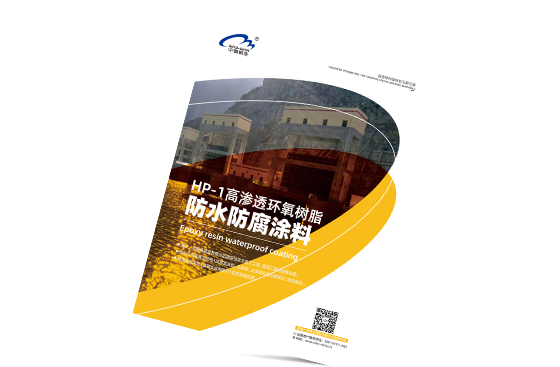Sustainable Elegance: The Beauty of Carbon Fiber Wrap in Architectural Concrete
Release Time:
2024-09-12 10:00
Sustainable Elegance: The Beauty of Carbon Fiber Wrap in Architectural Concrete
Table of Contents
- 1. Introduction to Carbon Fiber Wraps in Architecture
- 2. What is Carbon Fiber Wrap?
- 3. Benefits of Carbon Fiber Wrap in Architectural Concrete
- 4. Sustainability in Architecture: The Role of Carbon Fiber
- 5. Applications of Carbon Fiber Wrap in Modern Construction
- 6. Design Considerations for Using Carbon Fiber Wrap
- 7. The Installation Process of Carbon Fiber Wrap
- 8. Costs and Economics of Implementing Carbon Fiber Wrap
- 9. The Future of Carbon Fiber in Architectural Design
- 10. Frequently Asked Questions
- 11. Conclusion
1. Introduction to Carbon Fiber Wraps in Architecture
In the realm of modern architecture, the quest for sustainable materials that offer both aesthetic appeal and structural integrity is at the forefront. **Carbon fiber wrap** has emerged as a revolutionary solution, marrying the elegance of design with durability and strength. This article delves into the beauty and benefits of carbon fiber wrap in architectural concrete, highlighting its transformative potential in creating sustainable structures.
2. What is Carbon Fiber Wrap?
Carbon fiber wrap is a strong, lightweight material made from carbon fibers woven together, providing exceptional tensile strength. Typically used in aerospace and automotive industries, its application in architecture has revolutionized how we think about building materials. When applied to concrete structures, carbon fiber wraps provide an added layer of protection, enhancing durability while reducing weight.
Understanding the Composition of Carbon Fiber
Carbon fibers are 5 to 10 micrometers in diameter and are composed primarily of carbon atoms. The fibers are woven into a fabric, creating a flexible yet robust material. When combined with a resin system, the resulting composite is not only incredibly strong but also resistant to environmental degradation.
3. Benefits of Carbon Fiber Wrap in Architectural Concrete
The adoption of carbon fiber wraps in architectural concrete presents numerous advantages. Here are some key benefits:
Enhanced Structural Integrity
Carbon fiber wraps significantly improve the structural integrity of concrete by increasing its load-bearing capacity. This reinforcement is particularly beneficial in retrofitting older structures.
Weight Reduction
One of the most remarkable features of carbon fiber wrap is its lightweight nature. This allows architects to design structures that are less burdensome on foundations and existing systems.
Corrosion Resistance
Unlike traditional steel reinforcements, carbon fiber wraps are not susceptible to rust, making them ideal for environments exposed to moisture or chemicals.
Flexibility in Design
The versatility of carbon fiber wraps allows architects to incorporate complex designs without compromising structural integrity. This flexibility can lead to more innovative and visually appealing architecture.
4. Sustainability in Architecture: The Role of Carbon Fiber
Sustainability is a critical consideration in contemporary architecture. The integration of carbon fiber wraps aligns with sustainable practices in several ways:
Reduced Material Waste
The application of carbon fiber wraps can minimize the need for extensive demolition and reconstruction processes, resulting in less waste and lower environmental impact.
Energy Efficiency
By enhancing the structural integrity of buildings, carbon fiber wraps can lead to better energy efficiency. Lighter structures often require less energy for heating and cooling, contributing to lower operational costs.
Long-Term Durability
Carbon fiber wraps can extend the lifespan of concrete structures, reducing the frequency of repairs and replacements, which translates to lower overall resource consumption.
5. Applications of Carbon Fiber Wrap in Modern Construction
The use of carbon fiber wrap in construction spans various applications:
Retrofitting Heritage Buildings
Many historical structures benefit from carbon fiber wraps, which reinforce the building without altering its original appearance. This preservation effort respects cultural heritage while enhancing safety.
Bridge and Infrastructure Rehabilitation
Bridges and other infrastructures often require strengthening to meet modern standards. Carbon fiber wraps provide an effective solution for reinforcing these structures, ensuring safety and longevity.
New Construction Projects
In new constructions, carbon fiber wraps can be incorporated from the ground up, allowing for innovative designs that leverage the material's strengths from the outset.
6. Design Considerations for Using Carbon Fiber Wrap
Integrating carbon fiber wraps into architectural designs requires careful planning:
Load Calculations
Understanding the loads that a structure will bear is crucial. Engineers must conduct thorough calculations to determine the appropriate type and amount of carbon fiber wrap needed.
Aesthetic Integration
The visual appeal of carbon fiber wraps allows for creative freedom in design. Architects must consider how the material's appearance will blend with other design elements.
Environmental Considerations
Selecting the right resins and adhesives can impact the sustainability of the project. Eco-friendly options should be prioritized to enhance the overall environmental performance of the structure.
7. The Installation Process of Carbon Fiber Wrap
Proper installation is critical to the performance of carbon fiber wraps. The process generally involves several steps:
Surface Preparation
Before installation, the concrete surface must be thoroughly cleaned and free of contaminants. Any cracks or damages should be repaired to ensure a solid foundation.
Application of Adhesives
Specialized adhesives are applied to the surface to bond the carbon fiber wrap effectively. Care must be taken to ensure even coverage for optimal adhesion.
Wrapping Techniques
Depending on the design, the carbon fiber wrap is then applied using various wrapping techniques. This may include layering for added strength and durability.
8. Costs and Economics of Implementing Carbon Fiber Wrap
While the initial investment for carbon fiber wraps can be higher than traditional materials, the long-term savings often outweigh these costs.
Initial Investment vs. Long-Term Savings
The upfront costs of carbon fiber wraps may be offset by reduced maintenance and repair expenses over the structure's lifespan. Additionally, energy savings can lead to further economic benefits.
Market Trends and Accessibility
As awareness of the benefits of carbon fiber wraps grows, the market is expanding, leading to increased competition and potentially lower prices for consumers.
9. The Future of Carbon Fiber in Architectural Design
The future of architectural design is leaning toward materials that offer both sustainability and aesthetic appeal. Carbon fiber wraps are paving the way for innovative building solutions.
Continuous Innovation
Research and development in carbon fiber technology continue to evolve, enhancing performance characteristics and broadening applications in architecture.
Integration with Smart Technologies
As the construction industry embraces smart technologies, the integration of carbon fiber wraps with these innovations will likely enhance building performance and sustainability.
10. Frequently Asked Questions
1. What are carbon fiber wraps made of?
Carbon fiber wraps are composed of carbon fibers woven together and typically combined with a resin system to create a durable composite material.
2. Can carbon fiber wraps be applied to existing structures?
Yes, carbon fiber wraps are often used to retrofit existing structures, enhancing their strength and durability without significant alterations.
3. Are carbon fiber wraps environmentally friendly?
When used properly, carbon fiber wraps can contribute to sustainability by extending the lifespan of structures and reducing maintenance needs.
4. How does the cost of carbon fiber wraps compare to traditional materials?
While the initial cost of carbon fiber wraps may be higher, the long-term savings on maintenance and energy can make them a cost-effective choice.
5. What types of buildings benefit most from carbon fiber wraps?
Carbon fiber wraps are beneficial for a range of structures, including heritage buildings, bridges, and new construction projects that require innovative design solutions.
11. Conclusion
The integration of **carbon fiber wraps** in architectural concrete signifies a remarkable shift towards sustainable building practices without compromising on elegance or functionality. As architects and engineers continue to explore innovative materials, carbon fiber wraps will undoubtedly play a pivotal role in shaping the future of architecture. By marrying beauty and strength, these materials not only meet the demands of modern design but also contribute to a more sustainable built environment. Embracing carbon fiber wraps is not just a trend; it is a commitment to innovative, responsible, and elegant architecture for future generations.
Latest News
High-Performance Cement Additive Redefines Green Construction Materials with Unmatched Strength and Sustainability
Effortless Strength: The Advantages of Carbon Fiber Wrap for Concrete Applications Table of Contents 1. Introduction to Carbon Fiber Wrap 2. What is Carbon Fiber Wrap? 3. Benefits of Carbon Fiber Wrap for Concrete 3.1 Enhanced Durability 3.2 Lightweight Properties 3.3 Flexibility and Versatility 3.4 Cost-Effectiveness
Concrete is a widely used building material known for its durability and strength. However, over time, environmental factors, heavy loads, and general wear can lead to the deterioration of concrete surfaces. Effective concrete repair is crucial for maintaining structural integrity and extending the lifespan of concrete installations. This guide explores essential methods and considerations for pro
Elevating Aesthetics with UHPC Facade Solutions: Transforming Architectural Design Table of Contents 1. Introduction to UHPC Facade Solutions 2. What is Ultra-High Performance Concrete? 3. The Advantages of Using UHPC for Facades 3.1 Exceptional Durability and Longevity 3.2 Aesthetic Versatility and Design Freedom 3.3 Sustainability and Environmental Benefits 4. Applications of UHPC in Modern Arch
Carbon fiber wrap is an advanced material that has gained traction in various industries, including construction and decorative design. Its unique properties make it an ideal choice for applications where strength, lightweight characteristics, and aesthetic appeal are paramount. In this article, we will explore the benefits, uses, and considerations of carbon fiber wrap, particularly within the co
Product Documentation
If you do not have a comprehensive understanding of our products, we have uploaded relevant technical documents for you to download and reference so that you can better understand our product usage and technical parameters
View More

Online Message











